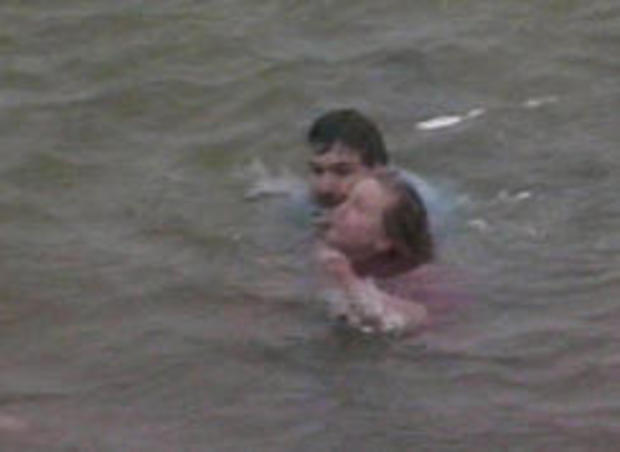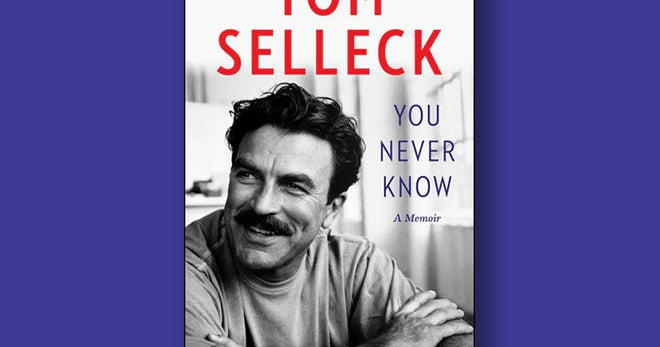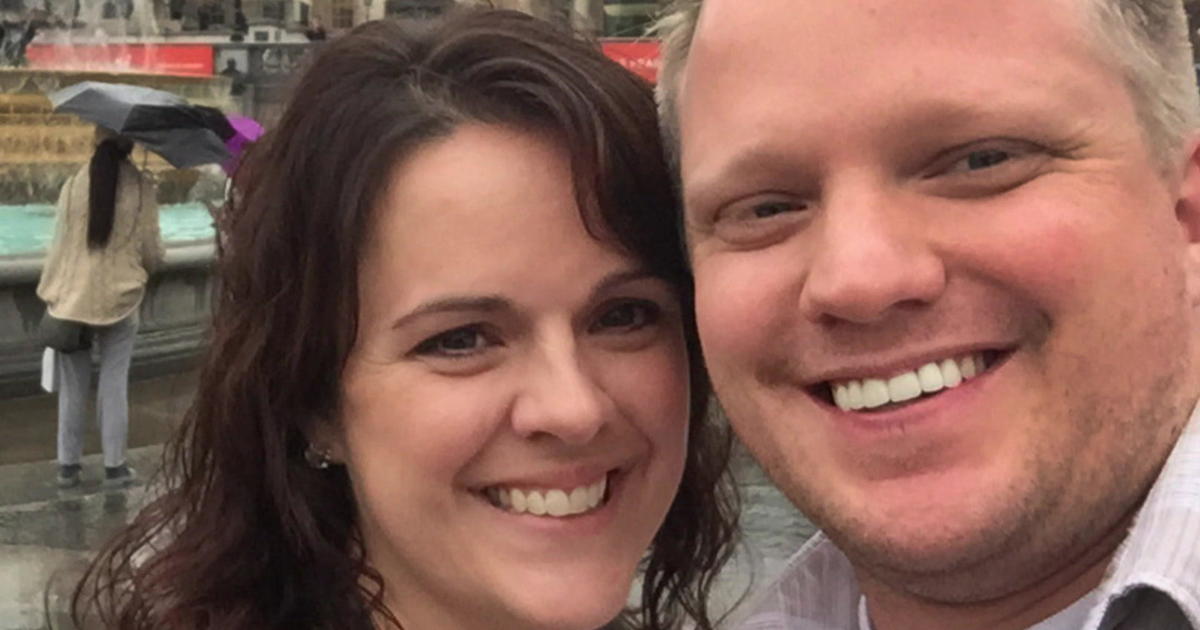Carnegie Heroes: A definition of selfless humanity
Everyday heroes actually aren’t all that rare. Still, acts of heroism in the face of mortal danger are unusual enough that when they happen, there ought to be a medal. And as Scott Simon of NPR will now tell us, there is:
Here’s a question for you: Do heroes look like Spider-Man? Or like Ashley Aldridge, a 19-year-old mother of two in Auburn, Illinois?
“I was making lunch for the kids and I had just finished cleaning up when I saw Earl sitting out there yelling for help,” she recalled.
She didn’t know Earl Moorman’s name then -- just that he was a stranger in a wheelchair on the train tracks right outside her home. The 75-year-old’s wheelchair had gotten stuck on the train tracks -- and he was stuck in his chair.
“I went to this neighbor over here, and asked him if he could watch the kids for a minute while I went to check on Earl,” Aldridge said. “At first, I tried to lift the wheelchair up out of the tracks, but I realized that wasn’t gonna work. So I grabbed him from behind, and tried to lift him up over the wheelchair.”
“He’s a big guy,” said Simon.
“Yeah!”
The guard arms had closed because a train was roaring straight at them. “Every time I looked up, it was closer,” she said. “The point when I actually was able to get him out, I was pulling him back, and the train smashed into the chair. It was seconds after I pulled him out.”
Heroes like Ashley Aldridge are courageous and rare. But each year, the Carnegie Hero Fund Commission gives medals, scholarships, medical expenses, if required, and a reward of about $5,000 to an average of 88 people in the United States and Canada.
While lots of people think they know what a hero is, Mark Laskow, chairman of the Carnegie Hero Fund Commission, has a particular definition: “It’s a person who’s under no obligation to act, leaves a place of safety, puts himself or herself in serious risk of death or major injury to save the life of another human being.”
“These people are almost always rescuing strangers,” said Laskow. “They’re not bound to them by family or tribe or any personal interest.”
The Carnegie Hero Fund is one of many philanthropic institutions founded by Andrew Carnegie. He came to Pittsburgh from Scotland when he was just a boy, and rose to become one of the titans of the American steel industry -- and one of the richest men in the world.
In 1901, at the age of 65, he sold the Carnegie Corporation and put his millions to work in foundations that still bear his name.
“He was a man of ideas,” Laskow said. “He was tremendously concerned with issues of peace and justice and ethics, and established organizations to support all of those things.”
And then, on a frigid January day in 1904, a mine explosion near Pittsburgh killed 181 men. Carnegie was shaken, and he shared his sorrow in this letter pulled from the foundation’s archive: “I can’t get those widows and children of the mine out of my head,” he wrote.
He was particularly moved by the stories of two men: Selwyn Taylor and Daniel Lyle, who gave their lives trying to save men they had never met who were trapped in the mine. Carnegie minted two medals in their honor and gave them to their families, making Taylor and Lyle the first Carnegie Heroes.
“I really have to say that for our family in general, heroism has always been pretty high,” said Linda Thorell Hills, Andrew Carnegie’s great-granddaughter. She sits on the board of the Hero Fund.
“A tragedy or something terrible can be taking place and a whole bunch of people are just standing there and going, ‘Oh my God, what do we do?’ Or they don’t do anything, or they run the other way. And then this individual somehow finds that deeper, inner strength that they’re compelled to help this person in need,” said Hills.
In the last 112 years more than 9,800 men, women and children have been honored -- each has a remarkable story.
Louis Baumann, of Wilkinsburg, Pennsylvania, was one of the first to receive the award. He rescued a man from drowning on July 17, 1904.
On March 26, 1912, 12-year old Henry Mathews, of Dothan, Alabama, saved a three-year old from an abandoned well.
Professional boxer Rudell Stitch, of Louisville, Kentucky, received the award twice -- the first time in 1958 for rescuing a man working on a dam on the Ohio River. Two years later, a second rescue attempt was unsuccessful. Both men died. The 28-year-old Stitch received the award posthumously.
You may remember Lenny Skutnik. On January 13, 1982, he dove into the frozen waters of the Potomac River to save a plane crash victim as she began to drown.
“At that second I’m taking my boots and my coat off, and I’ve decided I’m going in after her,” Skutnik said. “Then I swam off to the side, and that was mission accomplished.”
Seventy-eight people died that day. There were only five survivors, and thanks to Lenny Skutnik, one of them was Priscilla Tirado, who lost her husband and baby in the crash.
“None of them think they did anything extraordinary,” Hills said. “They think that they just ... it’s something that you do. And yet we well know that that’s not true.”
“I don’t know why I ran towards it; I would hope that anybody would have done the same thing,” said Andy Baugh.
But would we? Baugh is 29 years old -- a husband, father, and a midget car racer. He was on the track last year when he saw a rival car crash and burst into a fireball. He stopped his own racer to run toward the one on fire, and reached through the flames for the driver: a 14-year-old kid he’d never met named Chase McDermand.
“I just reached down there and grabbed Chase, all 90 pounds of him, underneath his arms and pulled him out and kind of jumped on him,” Baugh said.
Both Baugh and McDermand walked away from that fire unscathed.
Simon said, “You risked your life for another human being.”
“Yeah, I mean, I guess so,” Baugh said. “You know, you don’t think of any of that stuff at the time. It didn’t matter then.”
“And you worried for your own life?”
“I, no. I wasn’t. Not at the time. I sure wasn’t.”
And so, Eric Zahren, Director of the Carnegie Hero Fund, presented Baugh with his medal, quietly, in the McDermand family home, as this hero preferred.
“I’m very honored to get it,” he said. “It kind of helps sink it all in some. Nobody wants to be dubbed a hero, I guess. It was hard for me to accept; everybody’s calling me a hero. To me it was just right place, right time.”
Hills said, “It defines us as human beings. To take yourself from a place where you are safe to a place of grave danger to try to save another life is uniquely human. And I think it’s a wonderful, defining attribute of humanity. It makes us special. And it makes those who can do that even more special.”
To date almost 89,000 people have been nominated for Carnegie Hero Awards, and you would be awed to hear almost any of their stories, but only about 1 in 10 is chosen.
Walter Rutkowski, who is now President of the Fund, was one of its investigators for many years.
Simon asked why someone might not measure up.
“The risk is the primary requirement, and many of the cases simply are just not risky enough,” Rutkowski said. “They are lifesaving deeds, which is wonderful, but they don’t have that element of extraordinary risk that the commission requires. It’s the damsel tied to the railroad tracks and the knight comes and unleashes her right before the train strikes.”
And sometimes, the knight IS a damsel, like Ashley Marie Aldridge. She was presented with a Carnegie Medal for Heroism for her life-saving actions on September 15, 2015.
And the biggest reward isn’t a medal, or money.
“I would want someone to do that for me if that was my grandpa stuck,” she said. “So, I just had to.”
Just what a hero would say.
For more info:





